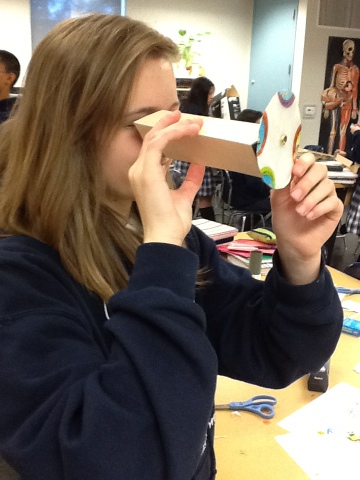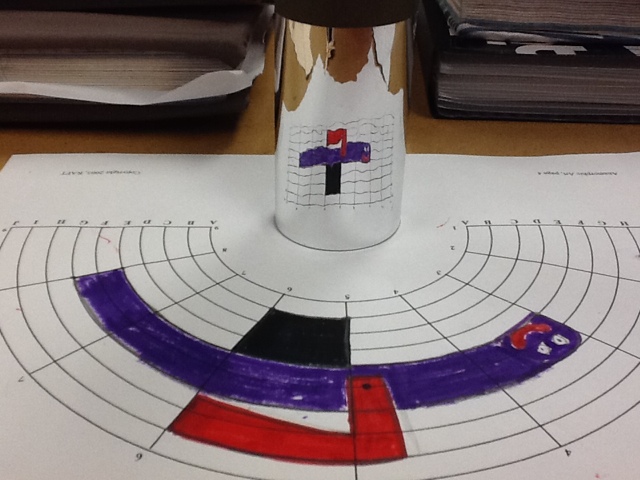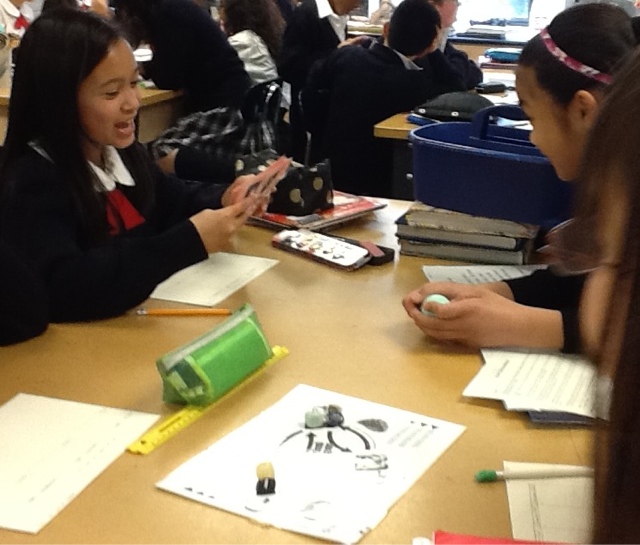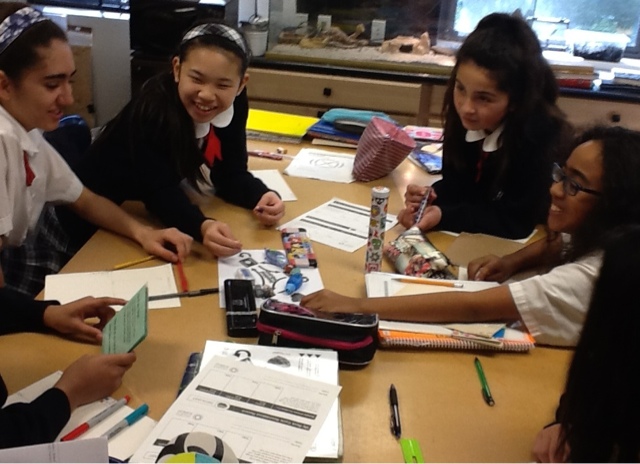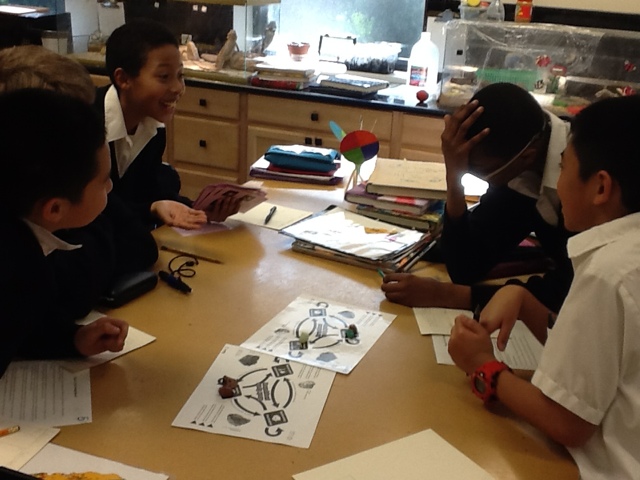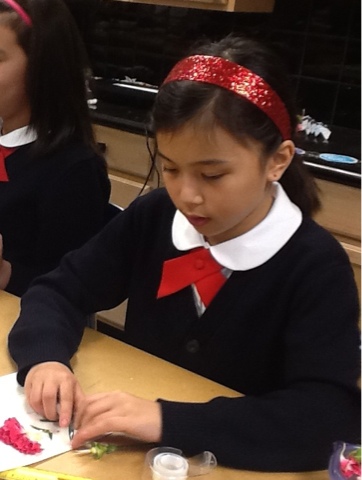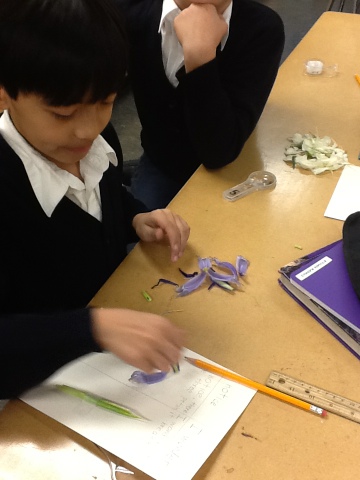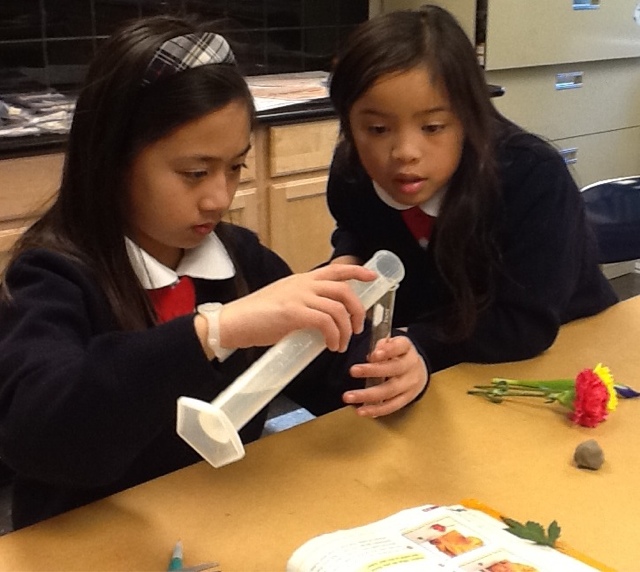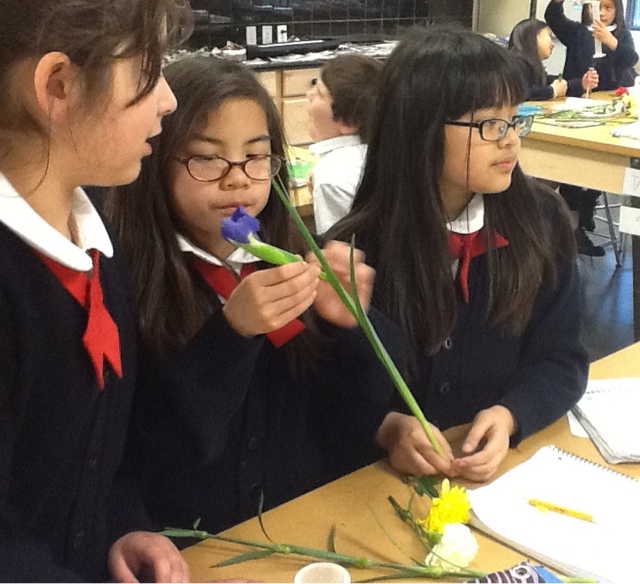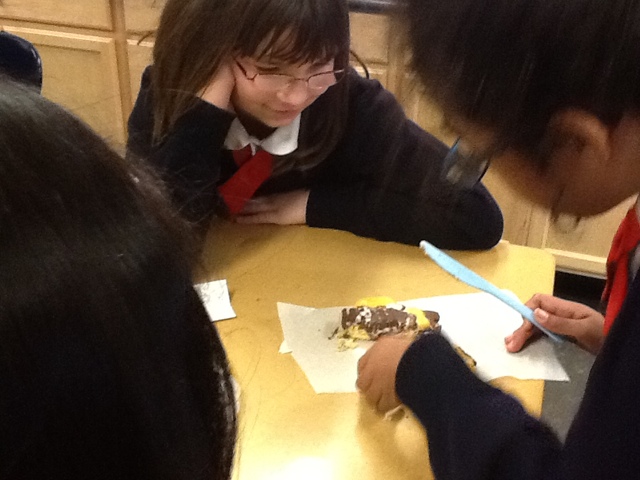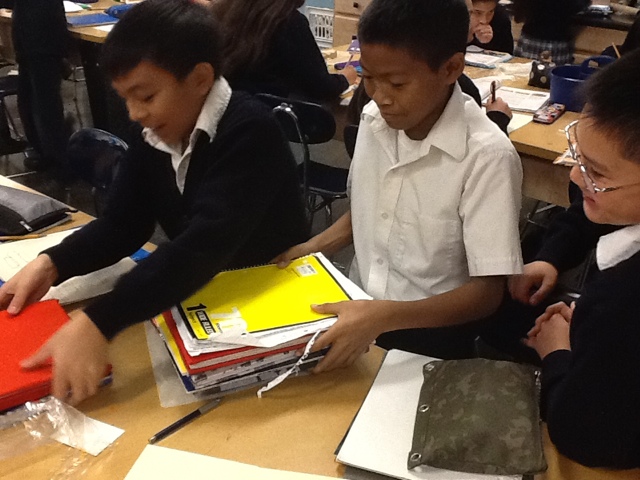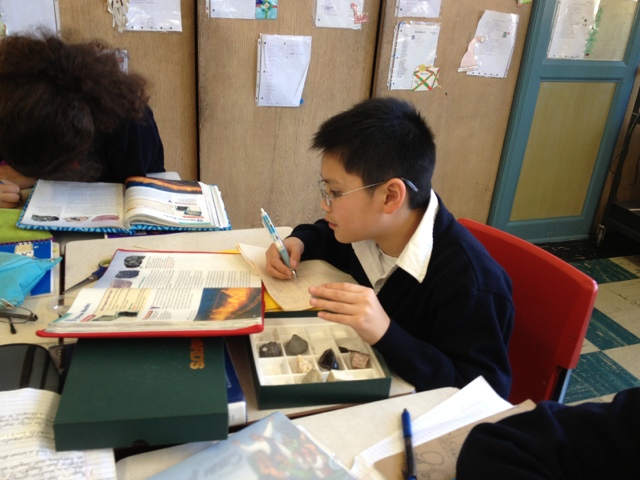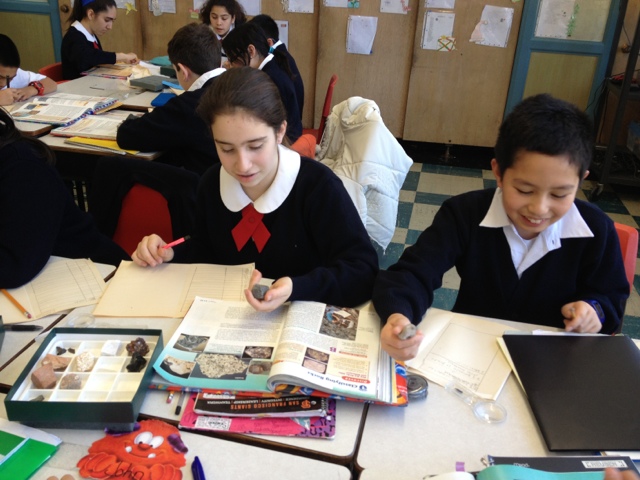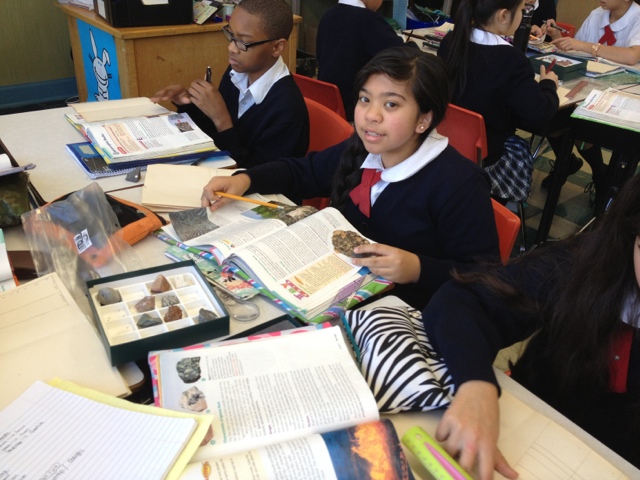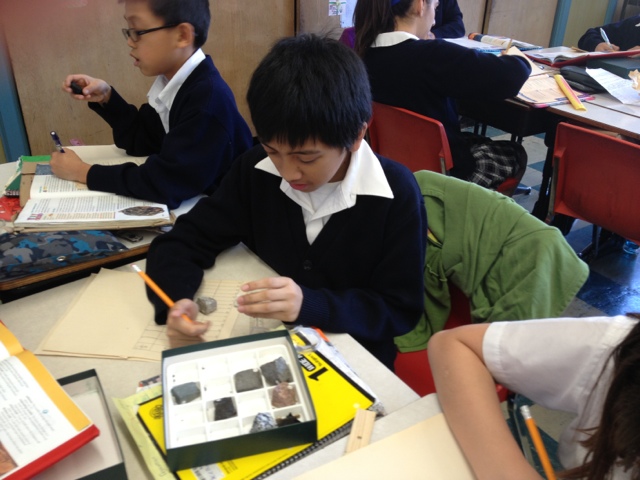After following instruction and using reused materials, the 8th grade constructed their own kaleidoscopes.
Kaleidoscopes were invented by Scottish scientist Sir David Brewster in 1816. Images from mirrors appear as the real objects, except left and right are reversed. A mirrored prism creates a series of reflections yielding symmetrical patterns.
Thursday, January 31, 2013
8th grade
They have been studying light and learning about how light bends and reflects.
They have constructed color wheels and today they turned in their Anamorphic Art. It's a blend of math, science and art.
The normal rule for mirrors is the angle of incidence is equal to the angle of reflection. However on a curved surface, the mirror reflects the distorted image back to its normal image.
They have constructed color wheels and today they turned in their Anamorphic Art. It's a blend of math, science and art.
The normal rule for mirrors is the angle of incidence is equal to the angle of reflection. However on a curved surface, the mirror reflects the distorted image back to its normal image.
6th Grade
Wrapping up the Rock unit and getting ready to get out of the book. The students play a Rock Cycle game that has been modified from the Academy of Sciences geology lesson plans.
Students are learning over and over how the rock cycle can change and the forces that move the rock cycle through sedimentary ~ metamorphic ~ igneous...
Students are learning over and over how the rock cycle can change and the forces that move the rock cycle through sedimentary ~ metamorphic ~ igneous...
Wednesday, January 23, 2013
5th grade FLOWER POWER
This part of our plants unit, to me, is really fun. Watching the students really look at flowers and take them apart with their hands is so fun. They are intrigued and really take the time to look at the intricacies of something as "simple" as a carnation or daisy or iris.
By creating a more Inquiry Based Lab the students are encouraged to explore the flowers and tape "parts" for later labeling. For today the objective was to just observe and notice and wonder....
By creating a more Inquiry Based Lab the students are encouraged to explore the flowers and tape "parts" for later labeling. For today the objective was to just observe and notice and wonder....
Tuesday, January 22, 2013
5th grade
Just a quick pic of the bulletin board showcasing some of the Cinquain poems created by the students. NGSS Next Generation Science Standards put an emphasis on cross-curriculum - which includes language arts.
The students also collected leaves and learned how to identify them based on sketches.
The students also collected leaves and learned how to identify them based on sketches.
4th grade
The name of the lab is Thirsty Flowers.
As students continue to learn about the importance of water for LIFE, the labs get a little more complicated. Using a variety of fresh flowers, students were to hypothesize which flower would "drink" the most water.
This lab involved lots of procedure and therefore, following directions and using lab equipment.
As students continue to learn about the importance of water for LIFE, the labs get a little more complicated. Using a variety of fresh flowers, students were to hypothesize which flower would "drink" the most water.
This lab involved lots of procedure and therefore, following directions and using lab equipment.
6th grade
One of the types of rocks that we learn about is sedimentary. This activity is to demonstrate what can happen to rocks as they are pressed together. Using geological rock terms - cementation or compaction?
The fun part it we used two different types of snack cakes. The results were pretty cool and students not only got to see the effect of pressure on these "rocks"....
They also got to eat the results!
The fun part it we used two different types of snack cakes. The results were pretty cool and students not only got to see the effect of pressure on these "rocks"....
They also got to eat the results!
Wednesday, January 16, 2013
4th grade
Where IS Hetch Hetchy? Where DO we get our fresh water?
Students use map skills, math and teamwork too. They are learning where our tap water originates and, hopefully, all the more reason to conserve our natural resource - WATER!
Students use map skills, math and teamwork too. They are learning where our tap water originates and, hopefully, all the more reason to conserve our natural resource - WATER!
Sunday, January 13, 2013
6th grade
Starting the Rock unit !! So fun.
Starting with some exploring using rock kits.
Is it sedimentary? Igneous? Metamorphic?
Starting with some exploring using rock kits.
Is it sedimentary? Igneous? Metamorphic?
Saturday, January 12, 2013
5th grade
"I want it, I need it"
Students categorize items into what is NEEDED and what is WANTED.
Open discussions about what natural resources are used in making all the things we have are very enlightening. Working together they discuss differing opinions and ideas of what is a need and what is a want. Listening in and joining group conversations and sharing perspectives and thoughts is mind opening for all of us.
Students are encouraged to take inventory of the things they possess and figure out their "footprint".
Environmental education goes a long way!
Students categorize items into what is NEEDED and what is WANTED.
Open discussions about what natural resources are used in making all the things we have are very enlightening. Working together they discuss differing opinions and ideas of what is a need and what is a want. Listening in and joining group conversations and sharing perspectives and thoughts is mind opening for all of us.
Students are encouraged to take inventory of the things they possess and figure out their "footprint".
Environmental education goes a long way!
Subscribe to:
Posts (Atom)
